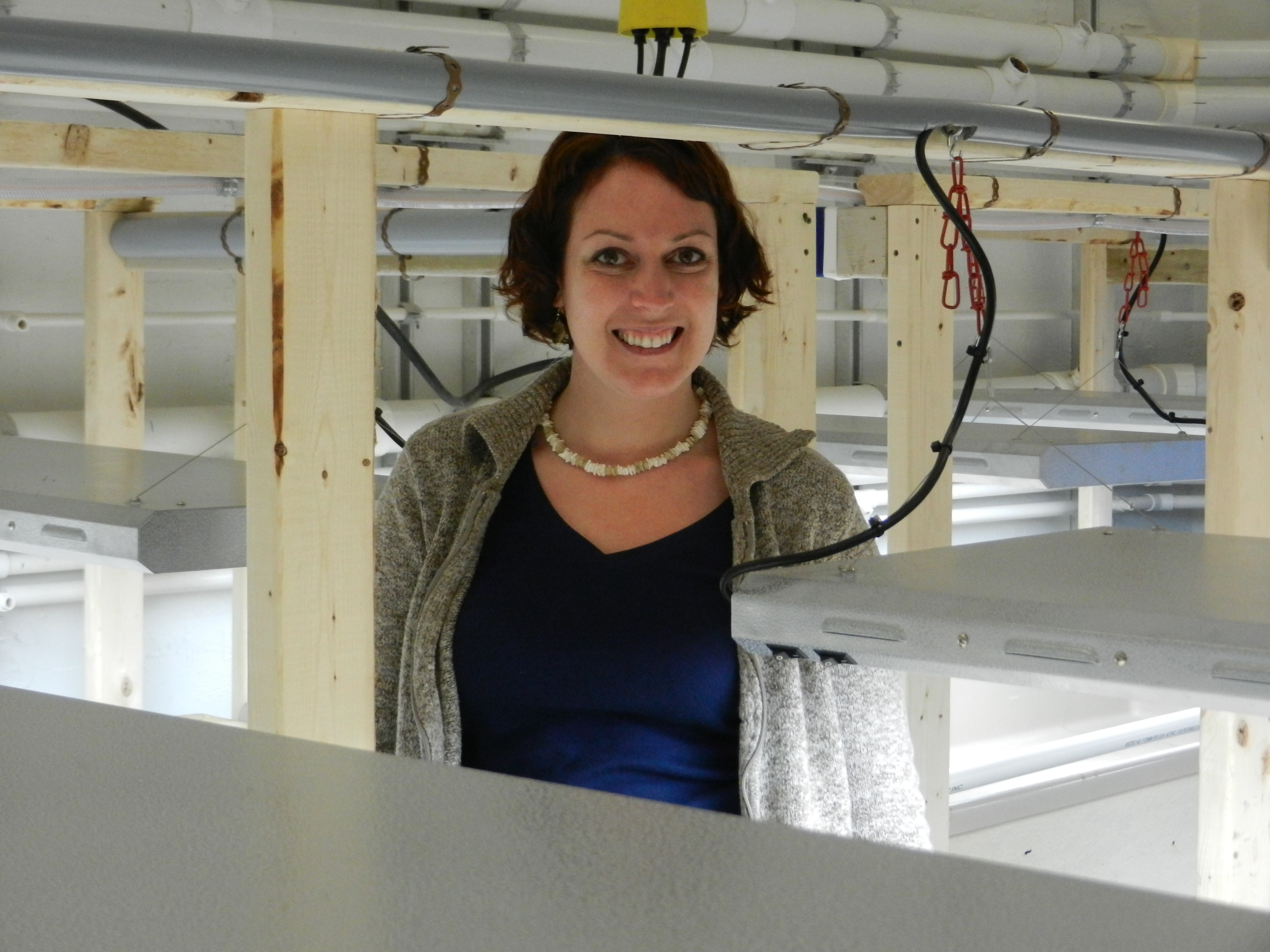The Seaweed and Integrated Multi-Trophic Aquaculture (IMTA) Research Laboratory of
Dr. Thierry Chopin
Stacy Murray
MSc Candidate: 2013 - 2016
Thesis Work: Freshwater Integrated Multi-Trophic Aquaculture (FIMTA): developing aquaponics for cold temperate commercial Atlantic salmon, Salmo salar, hatchery systems and investigating the use of kelp biochar as a plant substrate
Abstract from most recent presentation: Integrated Multi-Trophic Aquaculture (IMTA) has been developed for the marine phase of Atlantic salmon, Salmo salar, culture. However, salmon spend the first 9-18 months of culture in freshwater hatcheries. The development of IMTA for the freshwater phase (FIMTA) of salmon culture is not only important for the development of IMTA from egg to plate but can also offer farmers some advantages including: product diversification, increased water reuse and decreased waste production. Aquaponics is a form of FIMTA that integrates soilless culture (hydroponics) with recirculating aquaculture. This integration is only possible with the use of microbes that breakdown fish wastes into minerals that are then consumed by plants. In particular, using plants to extract phosphorus from effluent water can prevent eutrophication and help farmers uphold water quality guidelines.
To develop aquaponics for cold temperate conditions, salmon farmers must take into consideration the specific growth requirements of both the salmon and the plants. In particular, the required temperature for salmon culture, 10-15 °C, is the most influential feature. Selected plant species, therefore, need: a low optimal temperature to be hardy and easy to grow, have evidence of being grown without soil (hydroponically or aquaponically), have appropriate nutrient absorption capacities, and be of commercial value. Based on these requirements, the following plant species have been selected: watercress, Nasturtium officinale; leaf lettuce, Lactuca sativa; spinach, Spinacia oleracea; kale, Brassica oleracea var. acephala; chard, Beta vulgaris cicla; and chives, Allium schoenoprasum.
These species are being tested in a temperature and light controlled FIMTA pilot-scale system using effluent water collected from a local hatchery. The use of IMTA kelp biochar as an aquaponic medium for seedling development and plant support is also being examined. Using IMTA kelps in the FIMTA system, as a locally produced and renewable resource, would develop another interesting loop in the approach to recycling, which is closely linked to the overall IMTA concept.

 Accessible Version
Accessible Version